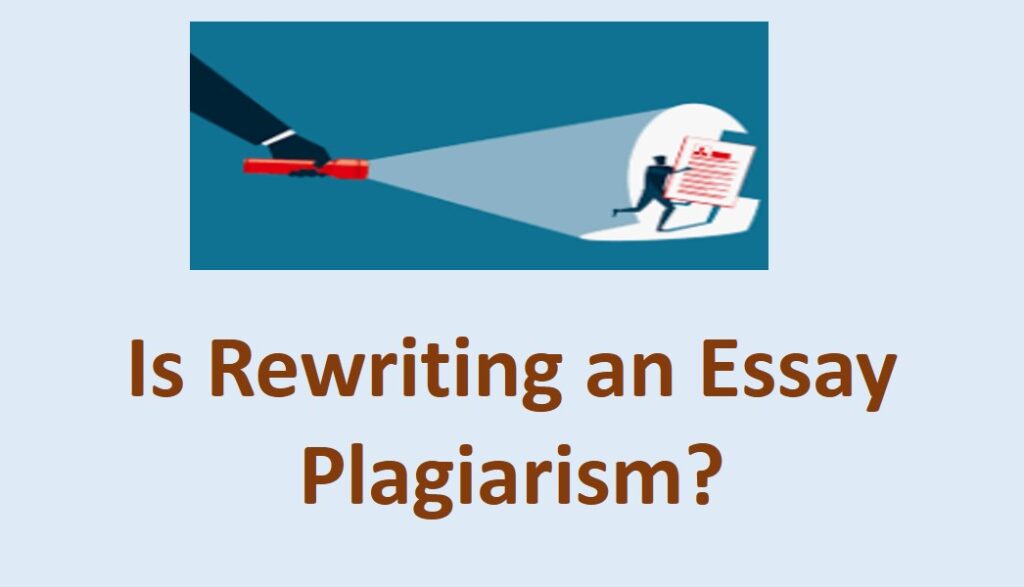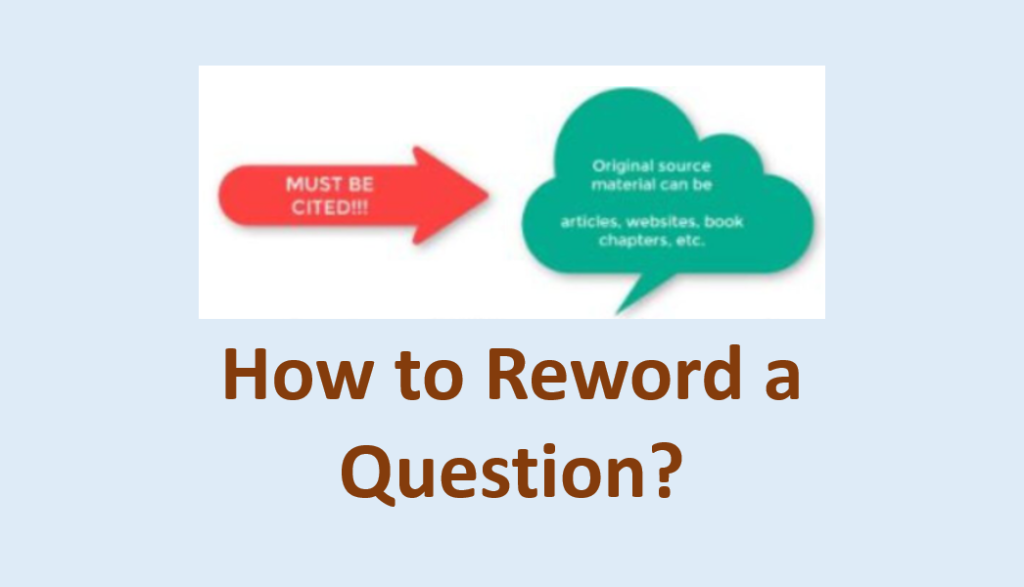We understand that you could be in the classroom or at the work place or just looking at online article and think there is a piece of text you need to rewrite. Will it be plagiarism? The truth is that plagiarism is a huge topic people don’t like to talk about. Here, we are glad to share a few things about it.
For instance, does rewriting an essay constitute an act of plagiarizing?
Is Rewriting an Essay Plagiarism?
Yes, rewriting an essay is plagiarism if it involves rephrasing another author’s work without appropriate citation. Regardless of how much you write the essay in your own words, borrowing ideas from the text that are not your own is considered plagiarizing.
However, this does not mean there are instances when rewriting an essay will not be regarded as plagiarism.
We will list some of these exceptions in a moment.
And what about borrowing someone else’s ideas? Here, you only need to avoid using their words.
Exceptions when rewriting an essay is not plagiarism
- Writing about an idea shared with you. If a friend shared an idea with you and you end up writing an essay about it, this can’t be plagiarism. You cannot steal an idea and there won’t be any reason to give credit to them.
- When rewriting your essay to improve the first draft, it cannot be viewed as plagiarizing.
People will say a lot of things, but most of them will be wrong.
Reusing an idea from an old essay is not plagiarism. If that were the case, all writers today would be in some kind of trouble with copyright lawsuits.
It is better to receive explanations from writers who have experienced the process of copyrighting books, articles, and essays.
Avoid taking advice on copyright infringement from random individuals.
Rewriting Your Own Essay is Self-Plagiarism
Rewriting Your First Essay Draft is Not Plagiarism. If you take another person’s essay and pass them off as your own, then it is considered plagiarism. As a bad practice in the academic field, copying other people’s essays without giving the credit is not allowed.
Some people who cheat may not feel guilty of copying.
Rewriting the essays and adding more details and insights to them can help reduce your risk of being marked for plagiarizing.
Rewriting a Previously Submitted Essay
Rewriting a previously submitted essay is plagiarism. Once you’ve written an essay and submitted it for grading, re-submitting it without making changes even if the essay prompt is exactly the same is viewed as plagiarizing.
Yes, reusing your own work without acknowledgment is considered self-plagiarism. This can range from re-submitting an entire assignment to reusing passages or data from something you’ve turned in previously without citing them.
Myths about Rewriting an Essay
1. If you rewrite it, it can’t be plagiarism
This is one of the biggest misconceptions we see today. Putting another text in your own words does not make it your own.
For an essay to be considered yours, it should demonstrate creativity, originality of idea, and consistency with ‘fair use’ policy in academia.
A similar, but false line of thinking holds that the simplest way to avoid plagiarism is to simply rewrite and restate everything that has been written in the essay. This, I can guarantee you, does not work.
Although many plagiarism detection tools can detect rewritten text (it is almost impossible to rewrite a lengthy work well enough to completely avoid detection), this does not make the work any less plagiarized in the eyes of the law.
The reason for this is that plagiarism does not only involve words, but also involves ideas and other types of information. You may not be infringing on another’s intellectual property rights if you copy and paste their work without using any of their words. However, you are still plagiarizing their work and should be held accountable.
As a result, while rewriting a piece may theoretically help to avoid detection by automated tools, it does not make it any less of a form of plagiarism in practice.
2. Plagiarism checkers are capable of detecting plagiarism in rewritten essays
Plagiarism detection tools are extremely effective, but the term “plagiarism detection” is a bit of a misnomer. Plagiarism detection software does not actually detect plagiarism; rather, it identifies and highlights instances of duplicated text in documents.
Although the tool may make an effort not to highlight properly-cited text, such as by ignoring content in quotations, all it is capable of doing is identifying passages that were first used somewhere else and emphasizing them. This copying is frequently not considered plagiarism at all because the duplicate text is cited, is a result of pure coincidence, or is simply common phrasing in the field.
Although plagiarism detection tools are extremely critical in identifying whether or not a piece of work has been plagiarized, they do not replace the need for a human to make the final determination of what is and is not plagiarism.
3. Plagiarized essays have higher percent similarity
In a related myth, many people believe that if more than a certain percentage of their essay is returned as copied, the work has been plagiarized. No matter whether the percentage is 5 percent, 10 percent, or some other figure, the general idea is that there is a hard limit to how much your essay or text can match without being considered plagiarism.
However, as previously stated, plagiarism detection tools do not detect plagiarism because matching text is not always indicative of plagiarism. In some cases, a work may contain significant amounts of copied text, but all of the copied text will have been properly cited and will be completely ethical.
Take, for instance, one student who copies another student’s essay in class. Although the first essay may be original and thus the copied one, and plagiarism detectors may not identify this, it is still plagiarism.
Plagiarism, constitutes even a single sentence or two that is copied verbatim and not cited. This means that a matching percentage under any theoretical limit that contains a significant amount of plagiarism is completely possible.
This myth is frequently perpetuated by educational institutions, which inform students that their papers should contain less than a certain percentage of matched text. It is more common, however, for this to be due to overuse of quoted material than it is to be due to plagiarism.
It’s important to remember that, while a high percentage of matching text is a good reason to look into a work more thoroughly, it does not necessarily imply that the work has been copied without permission.



